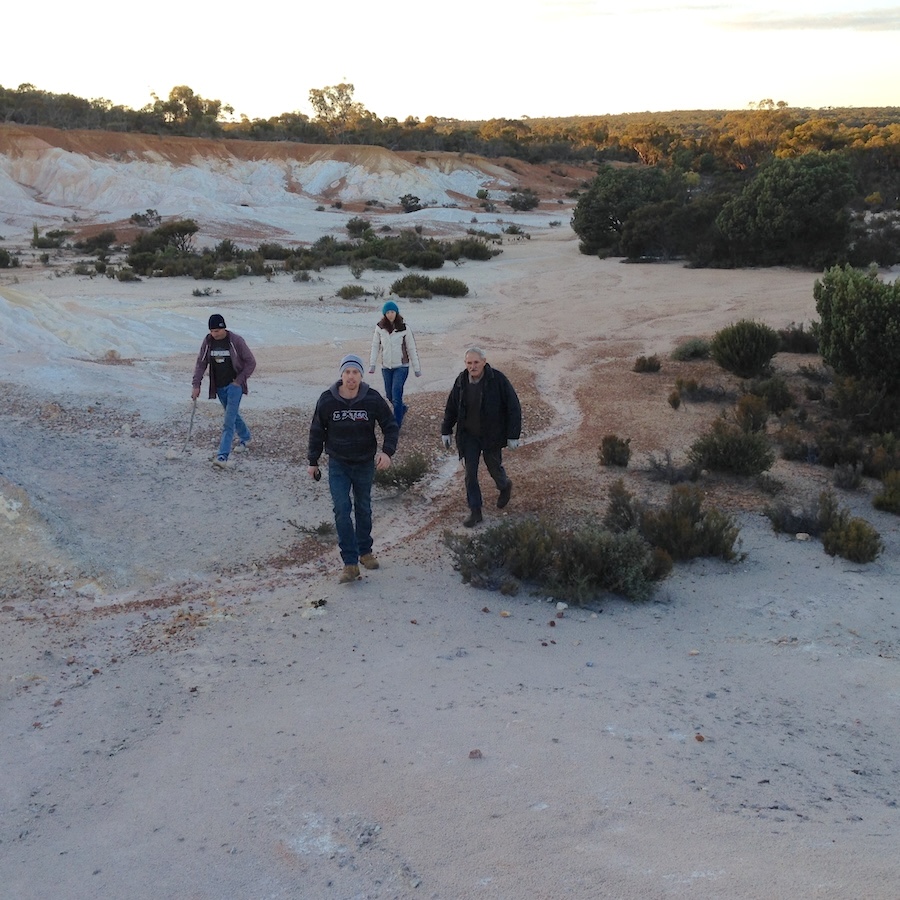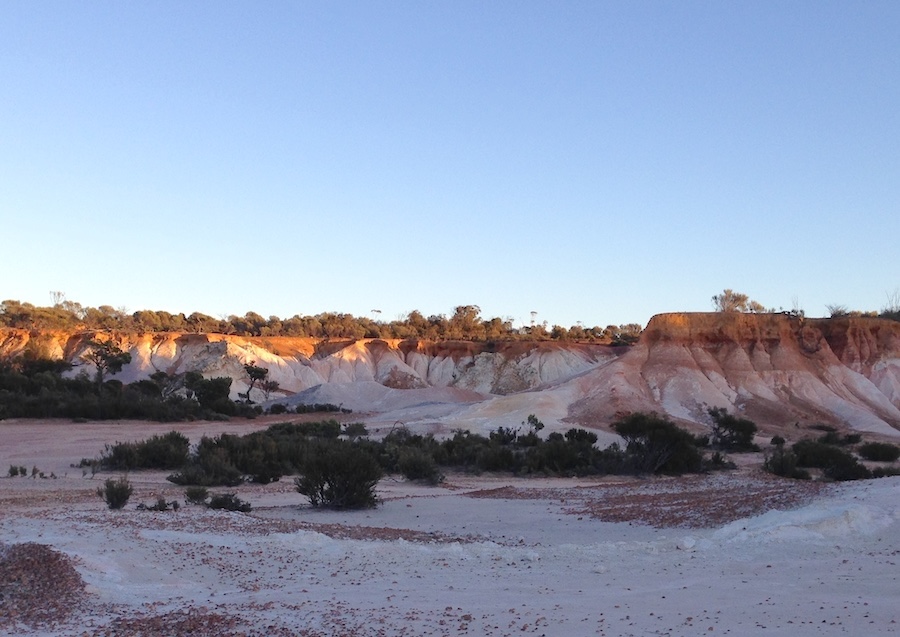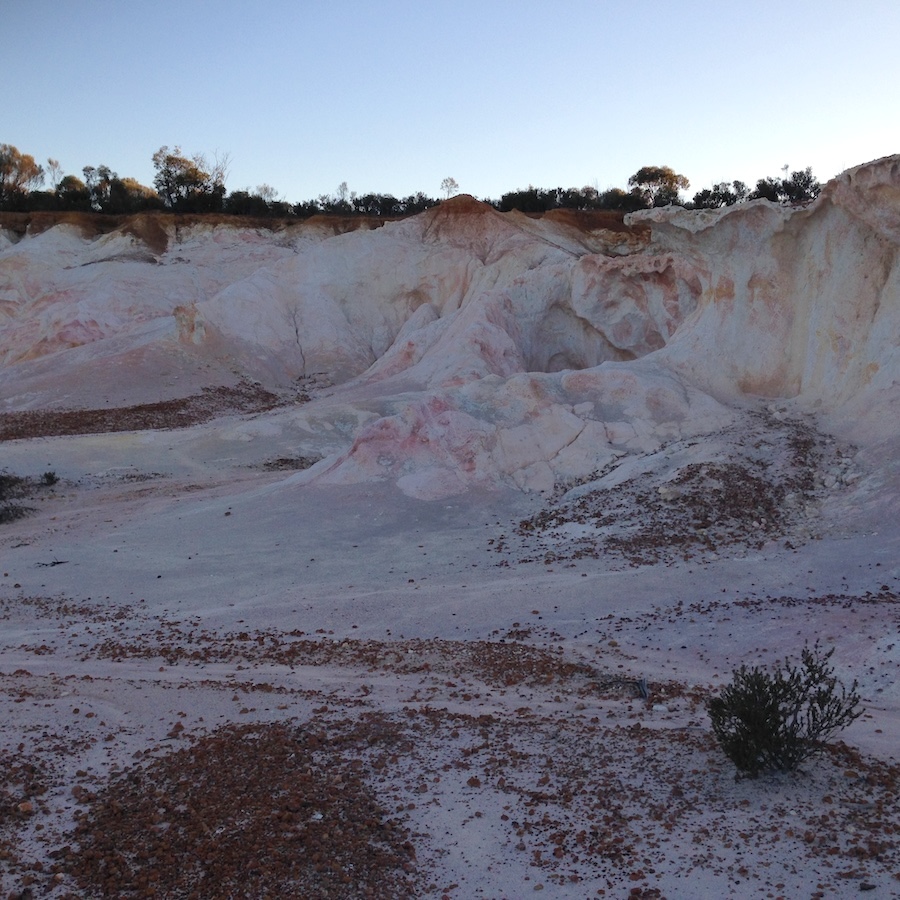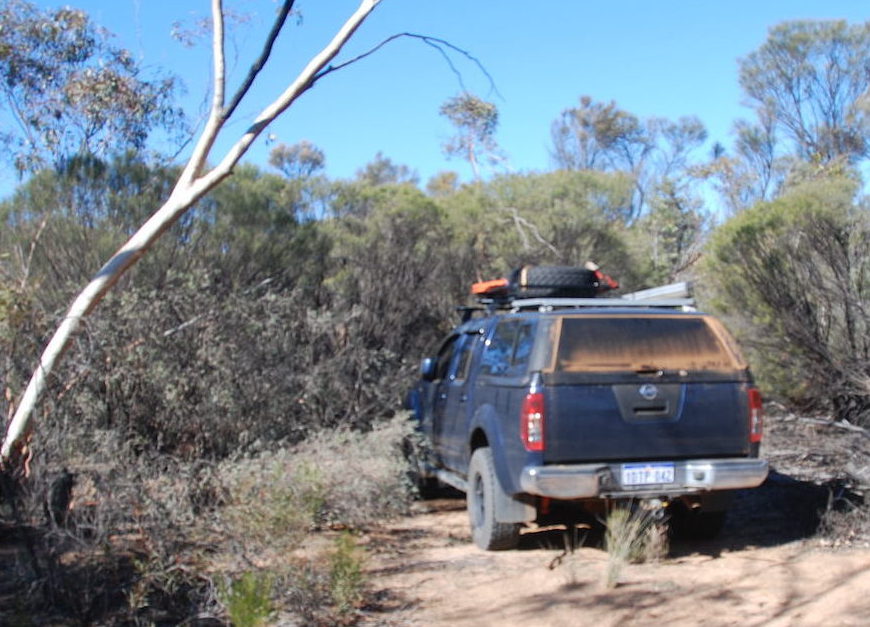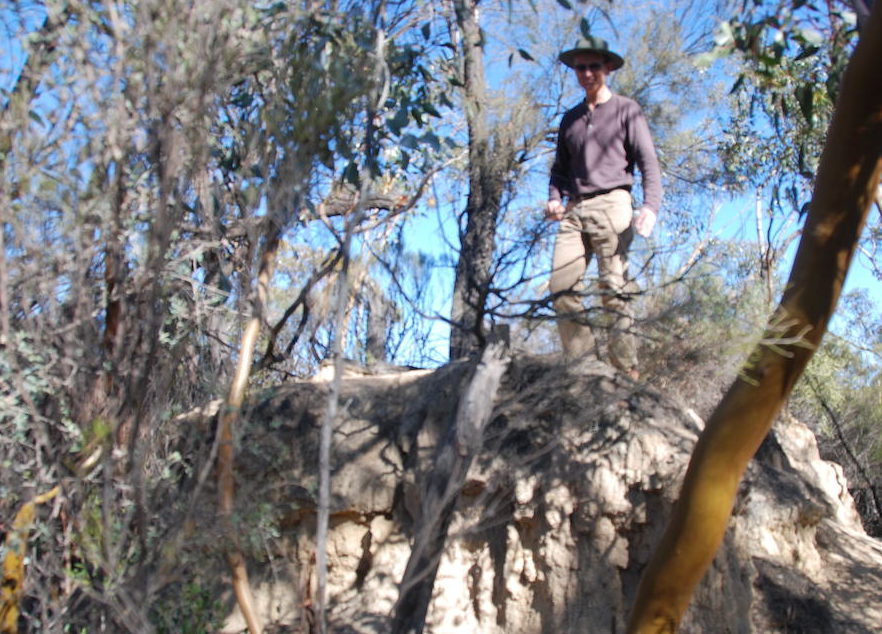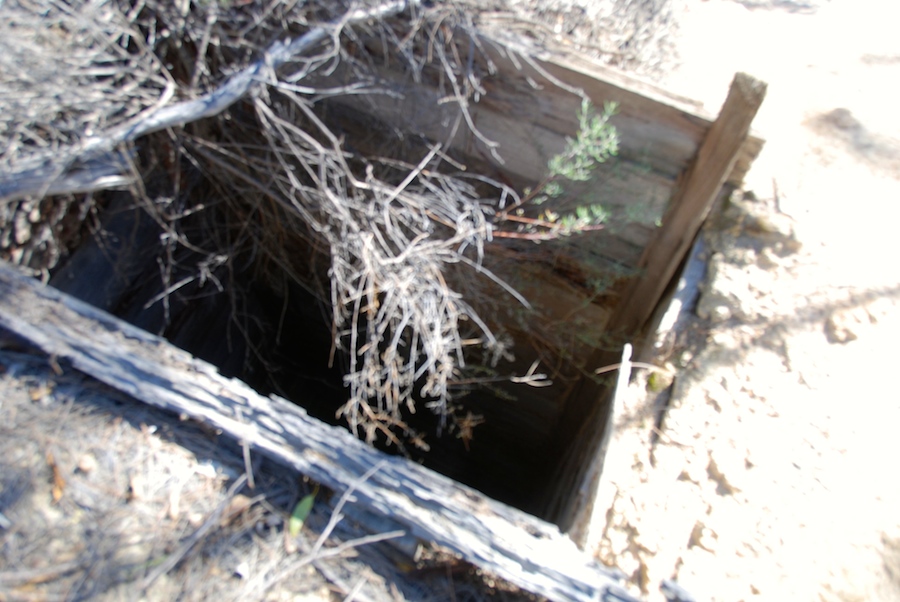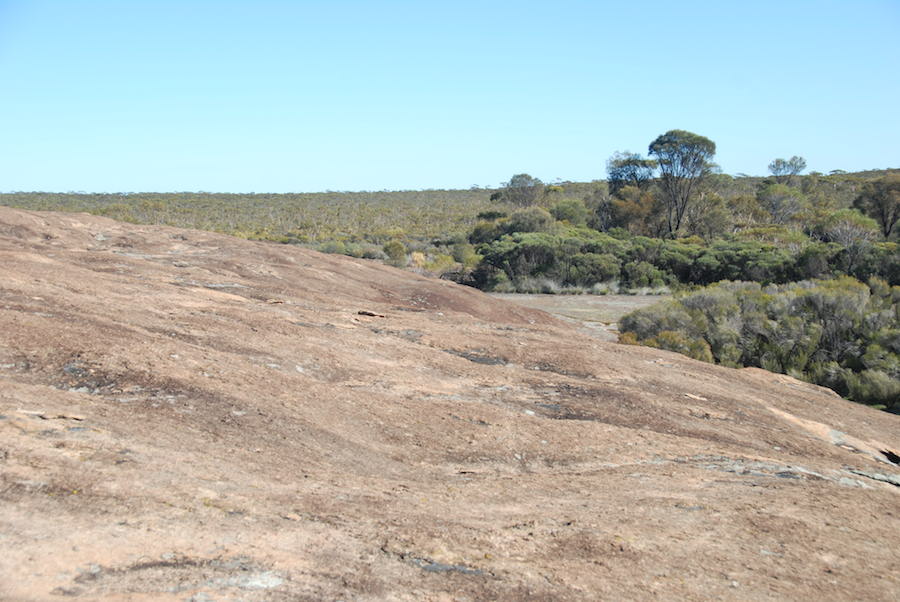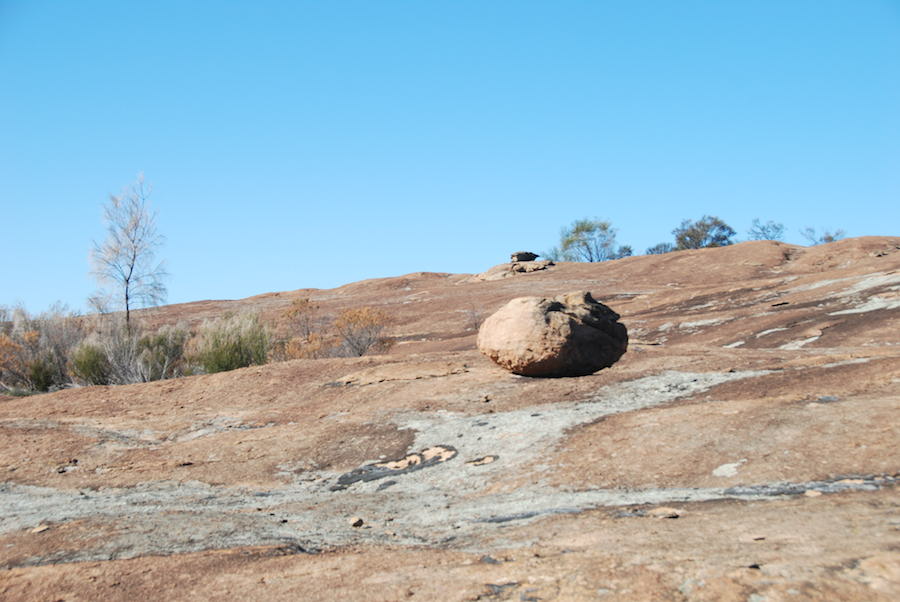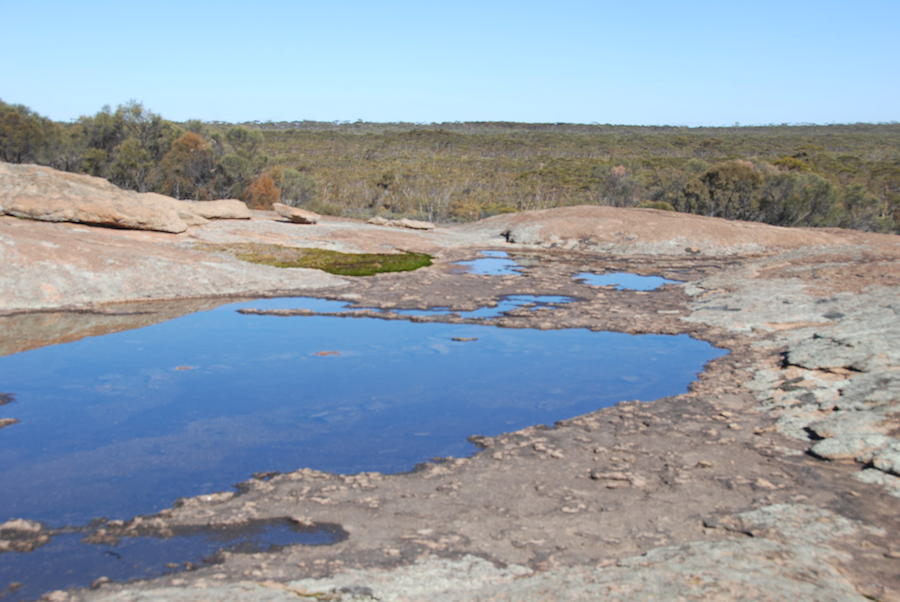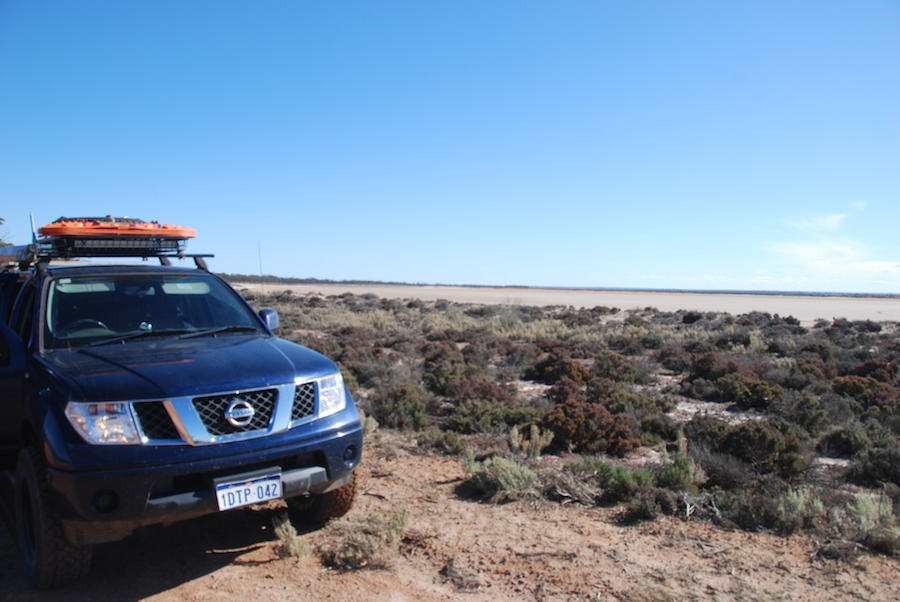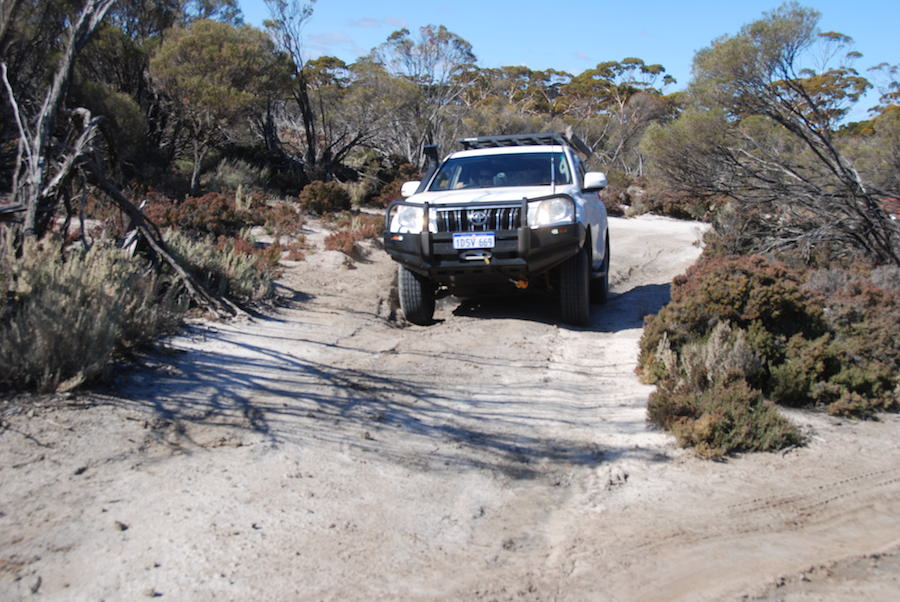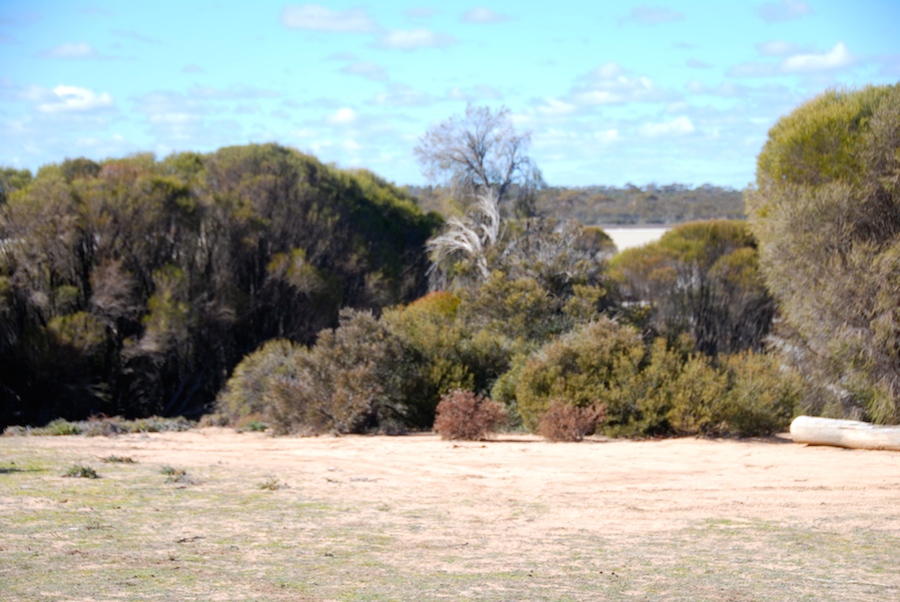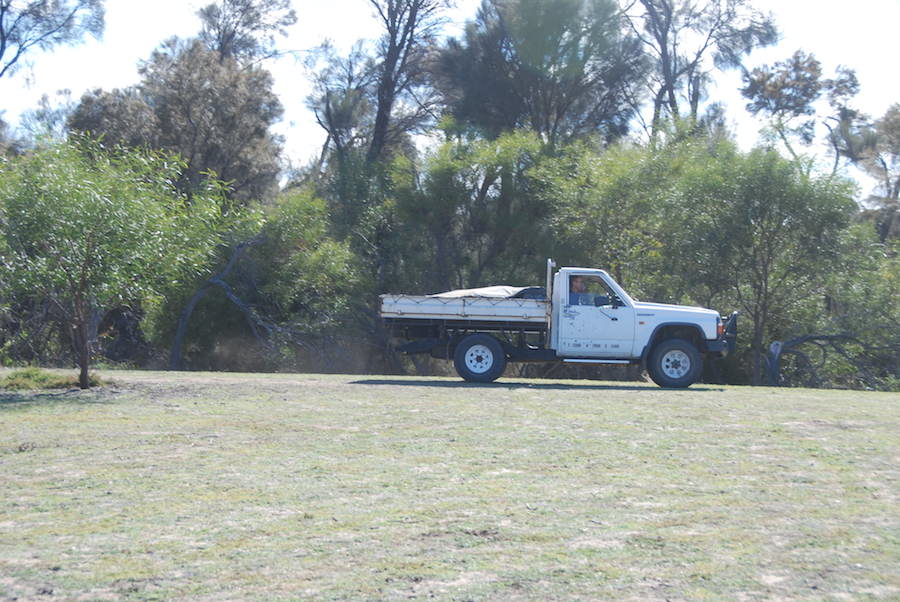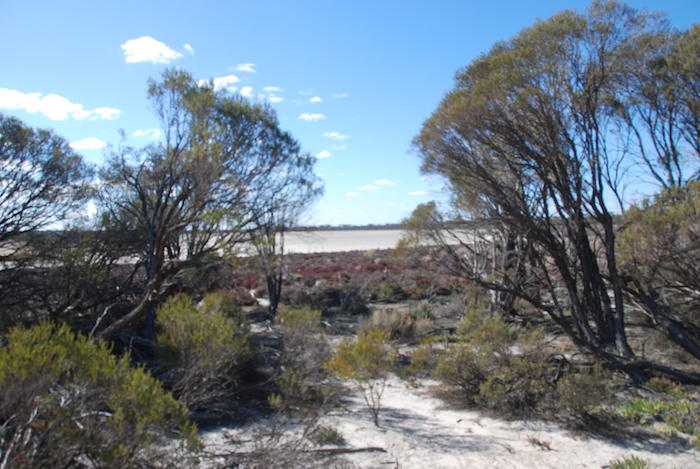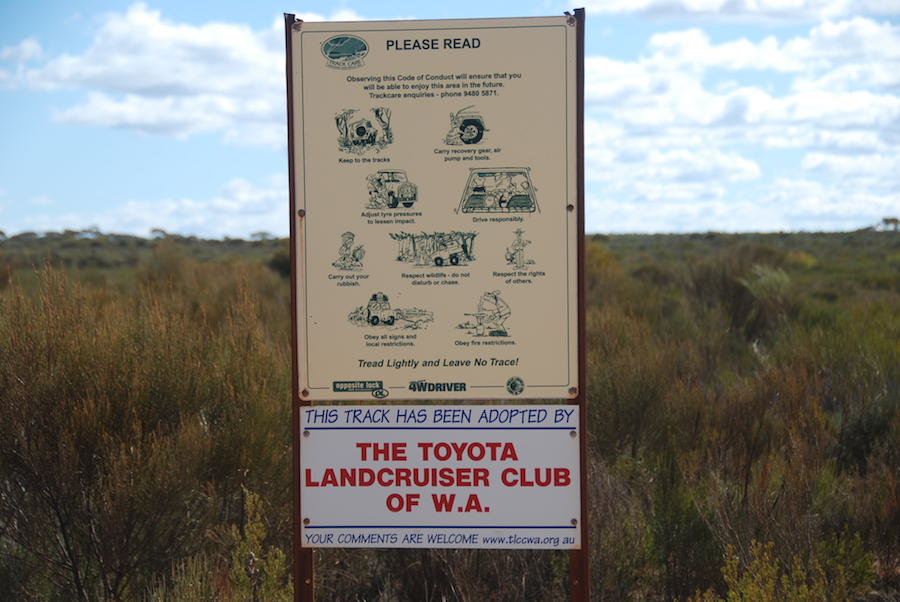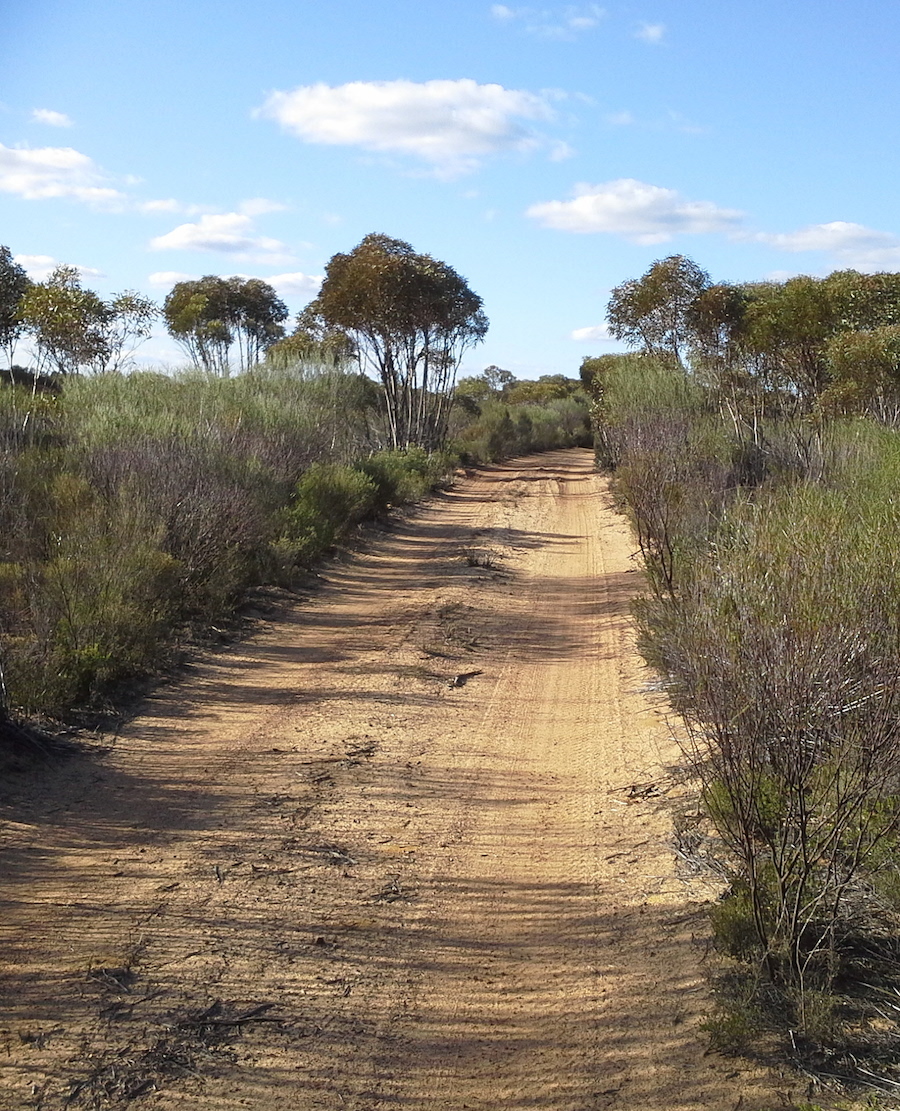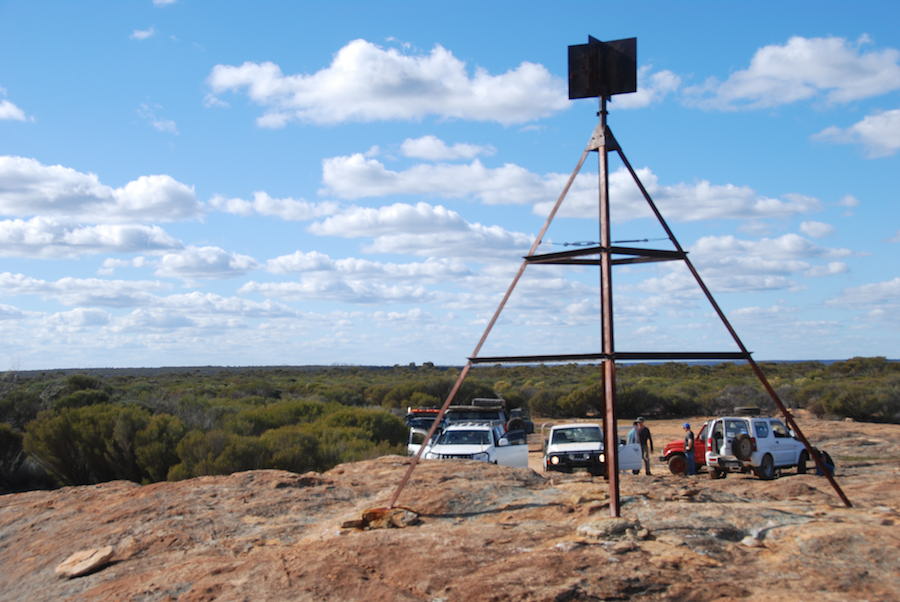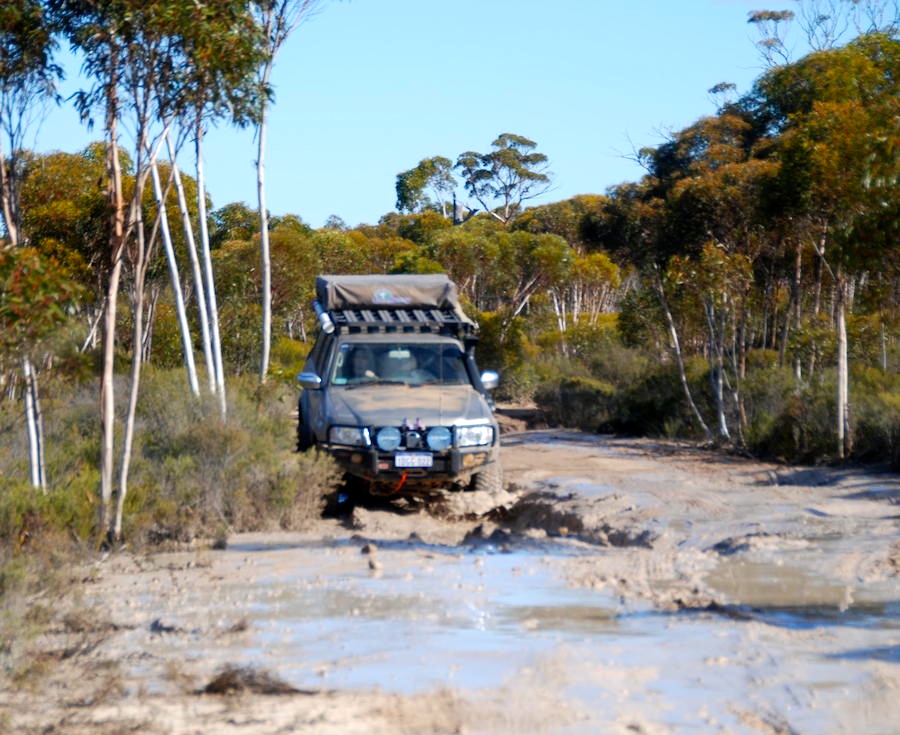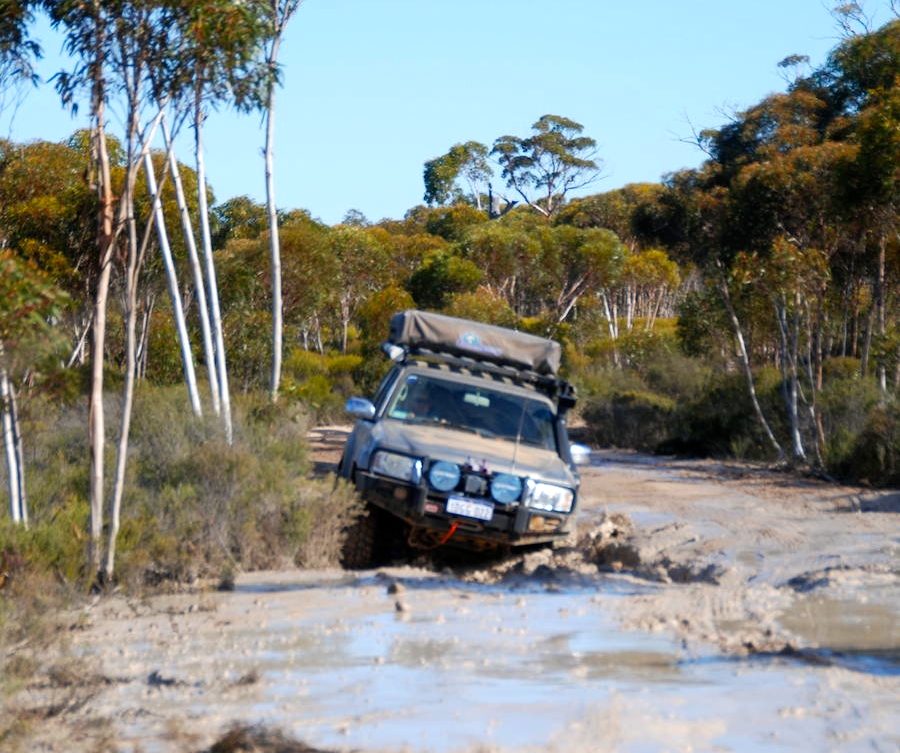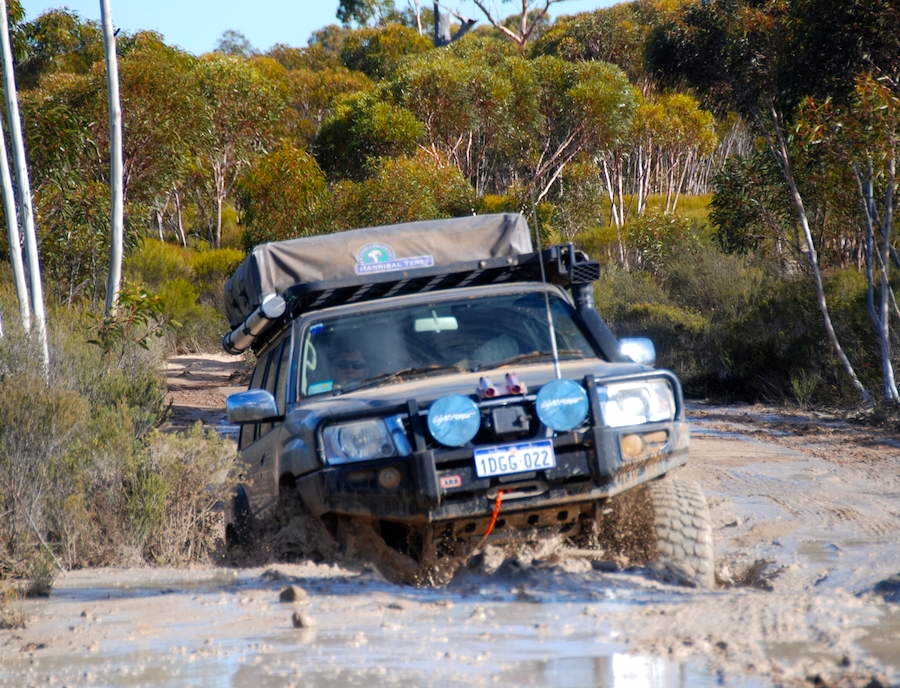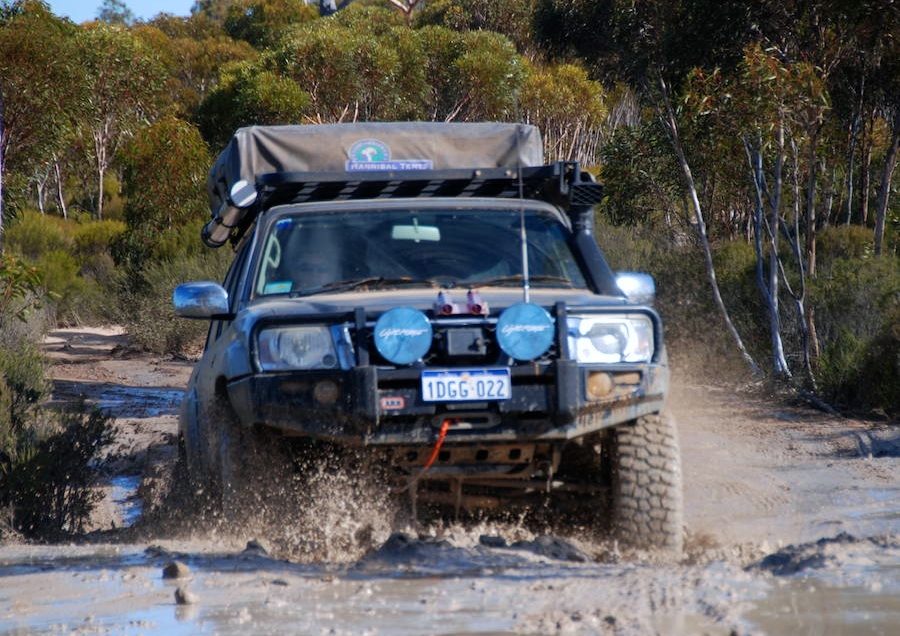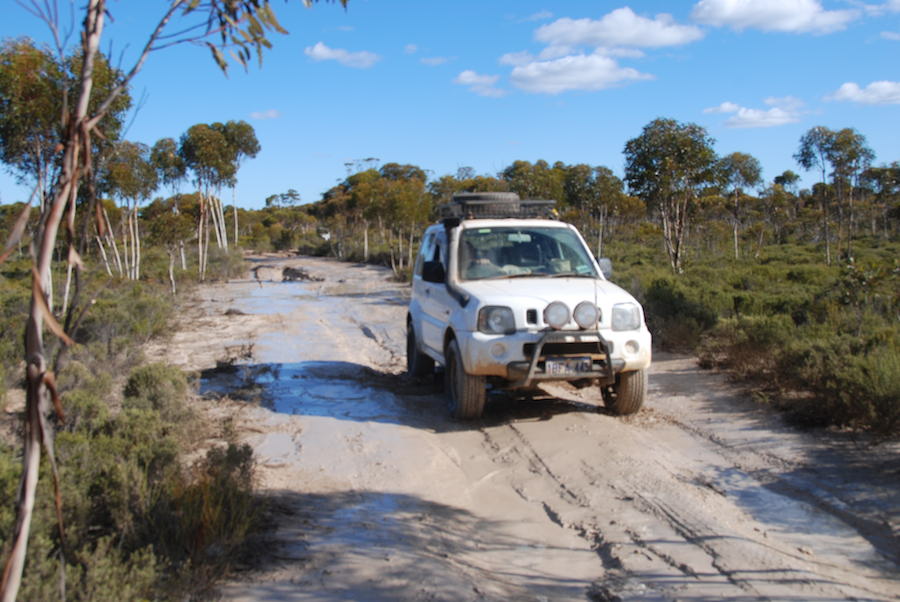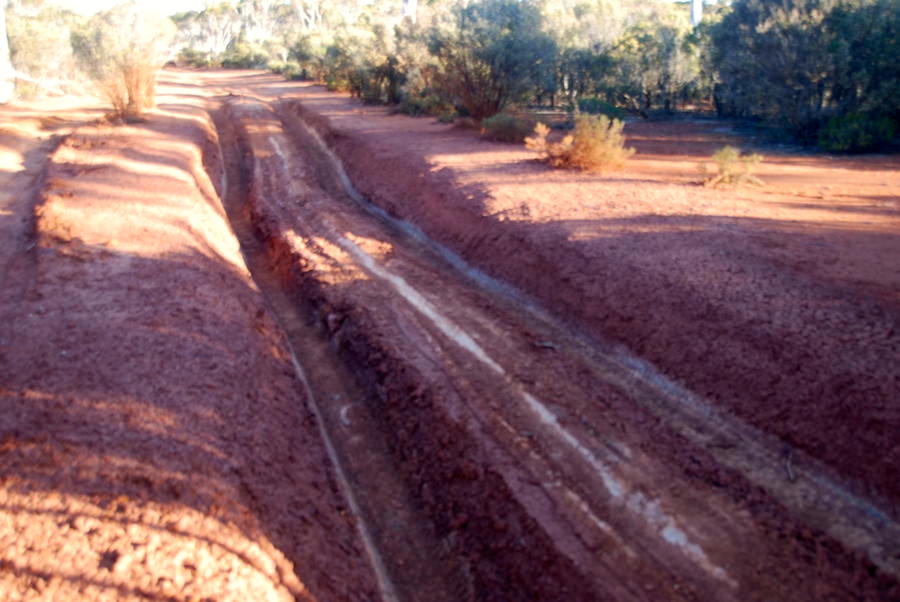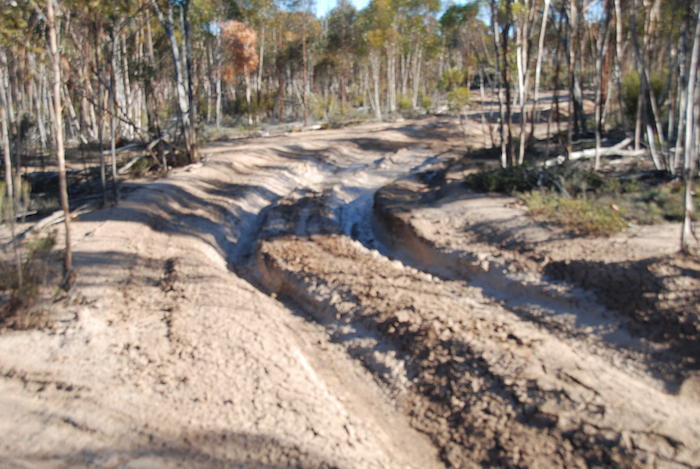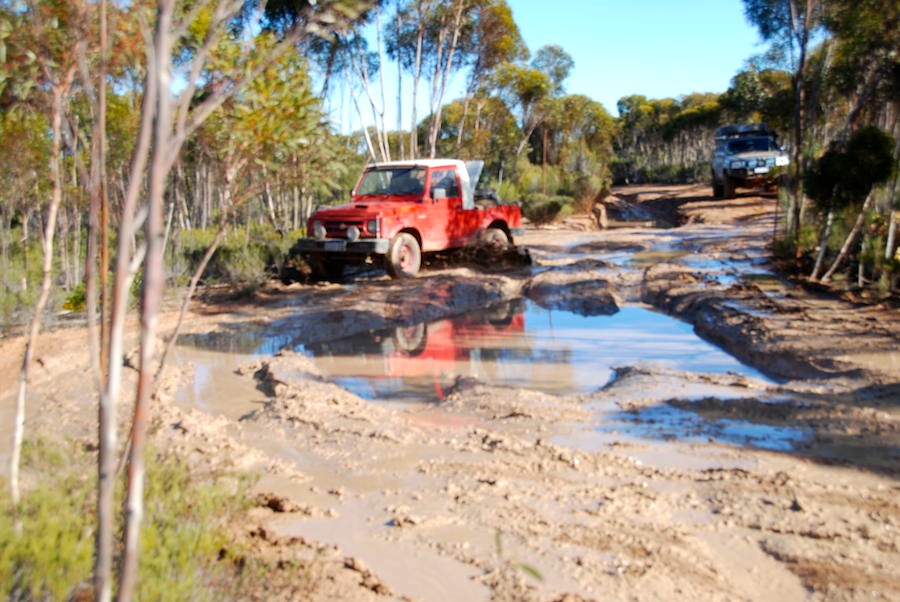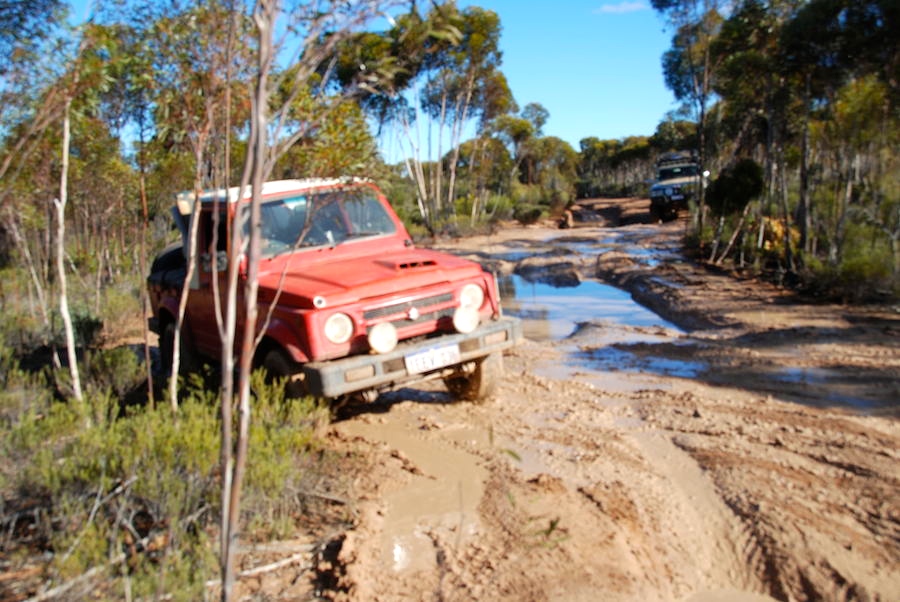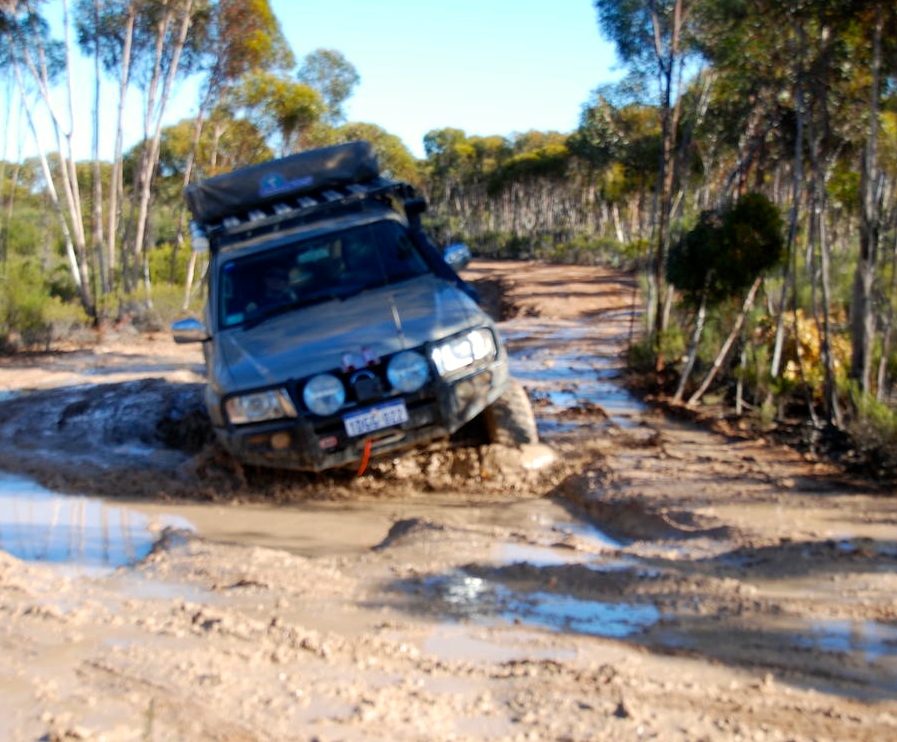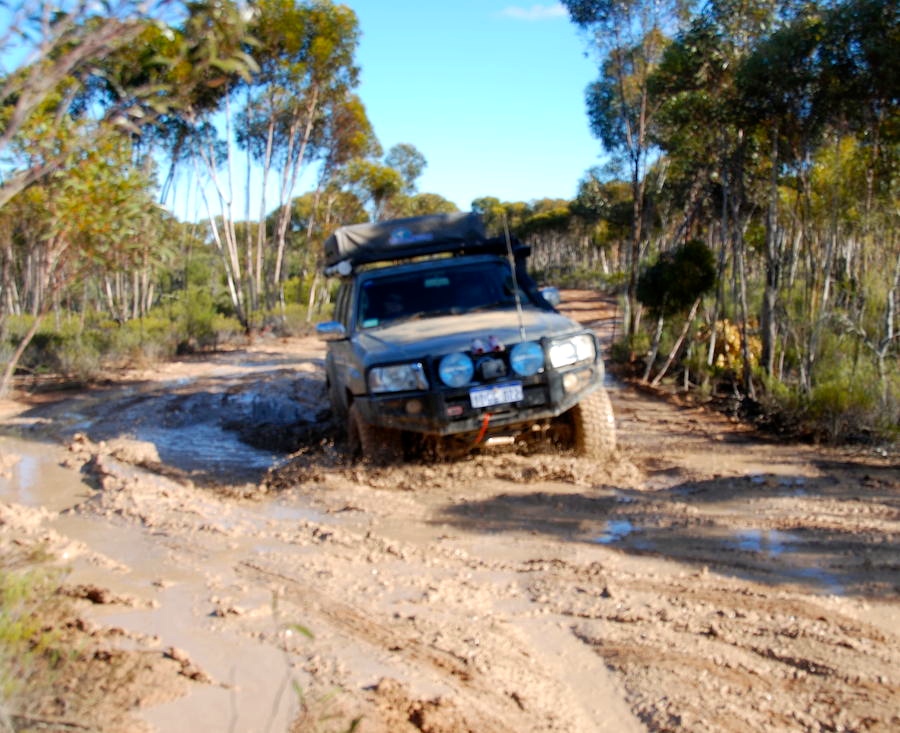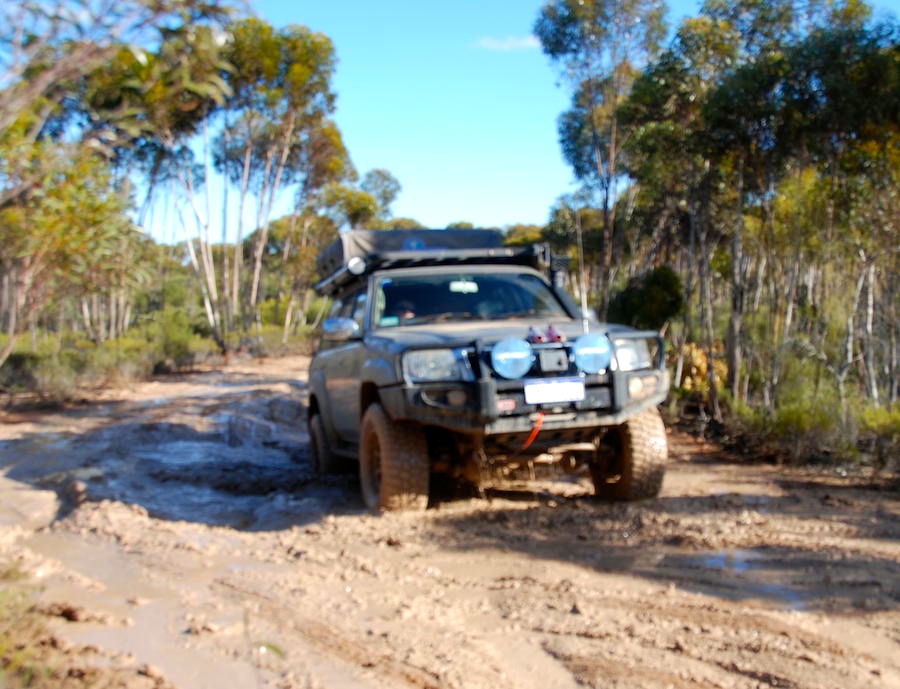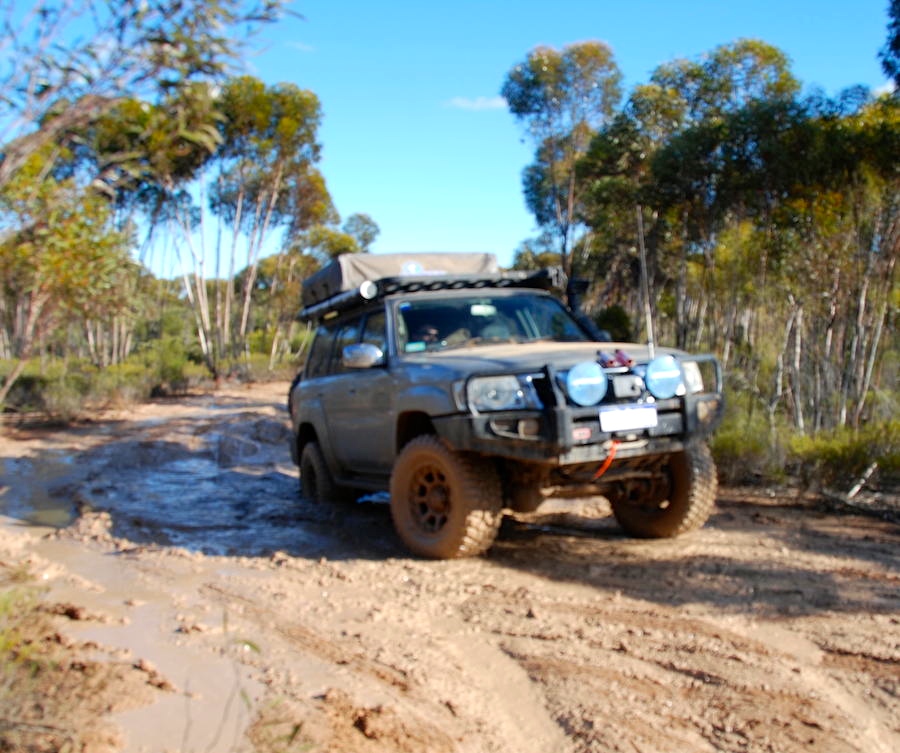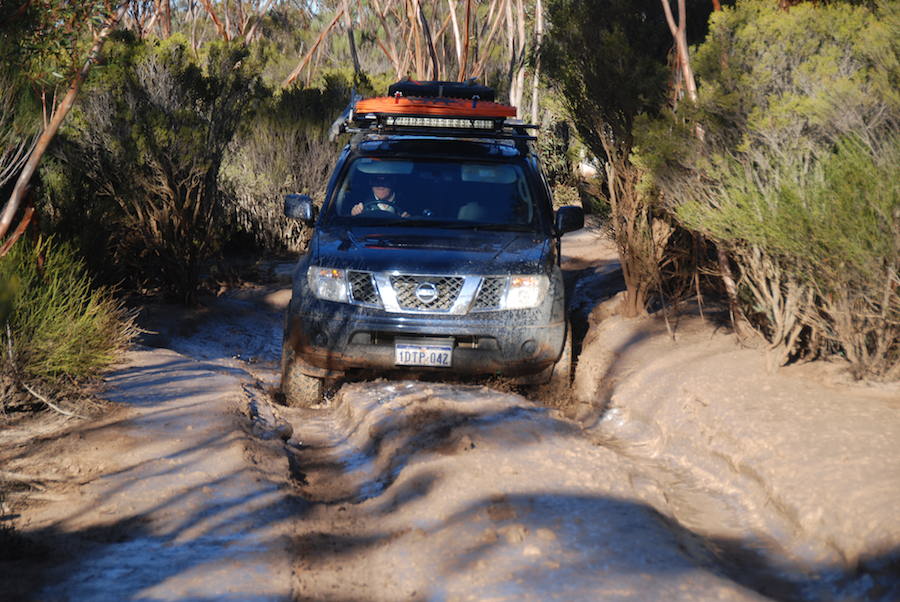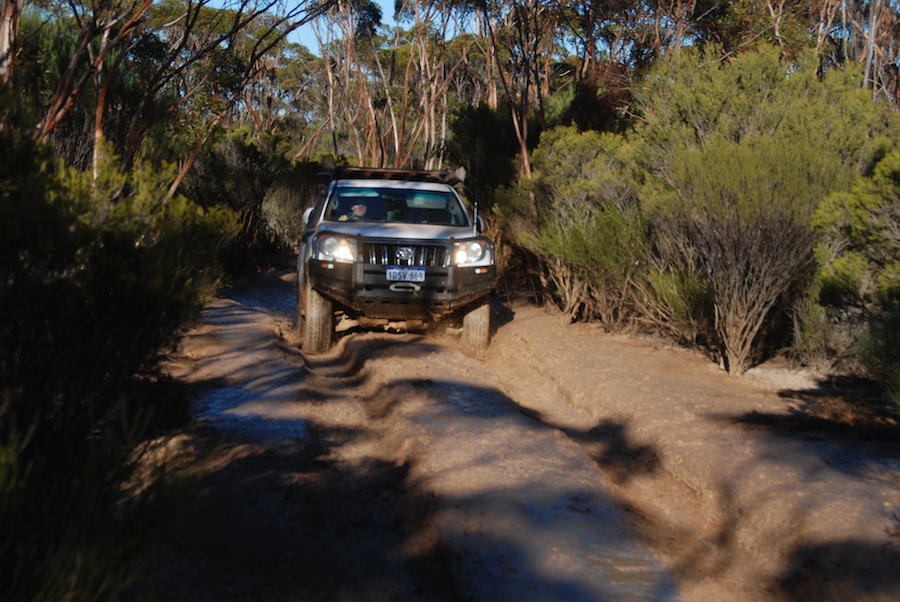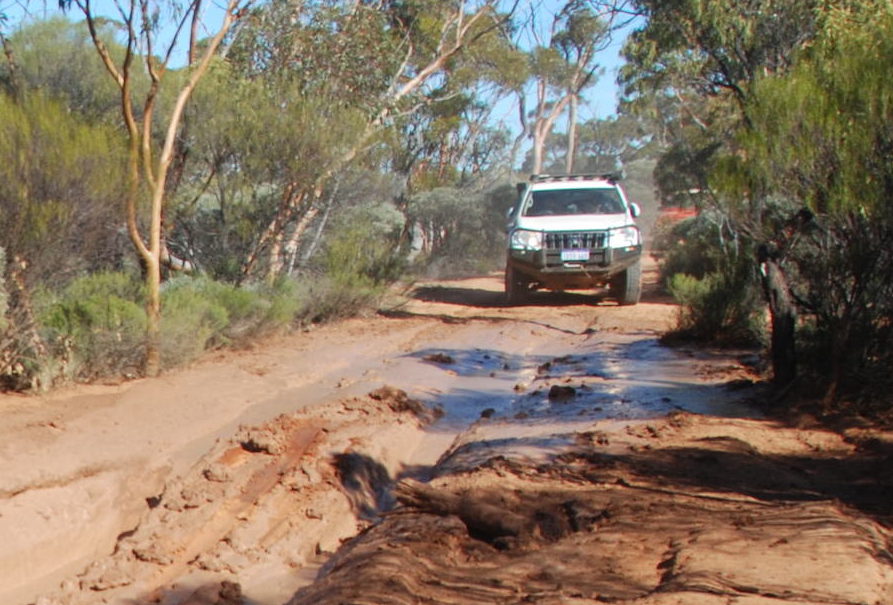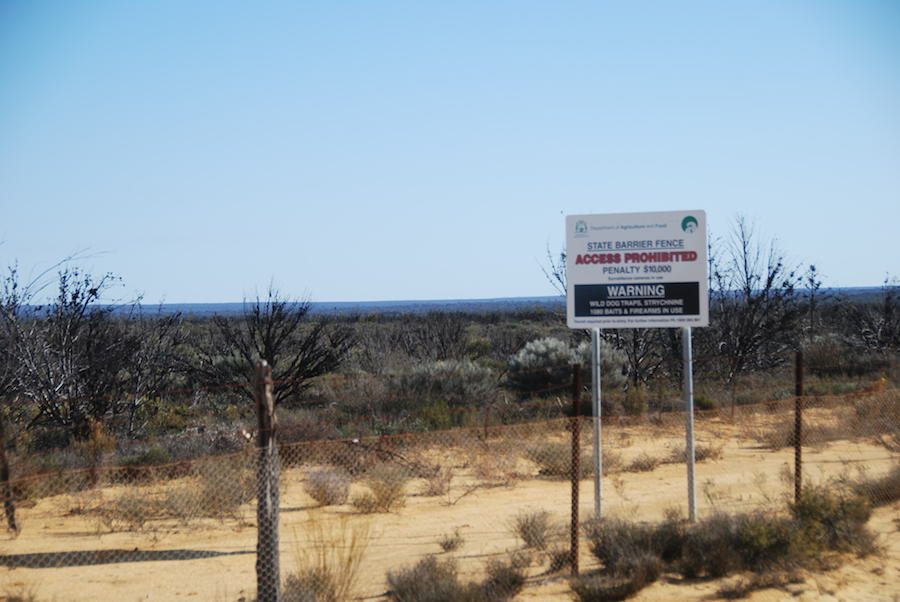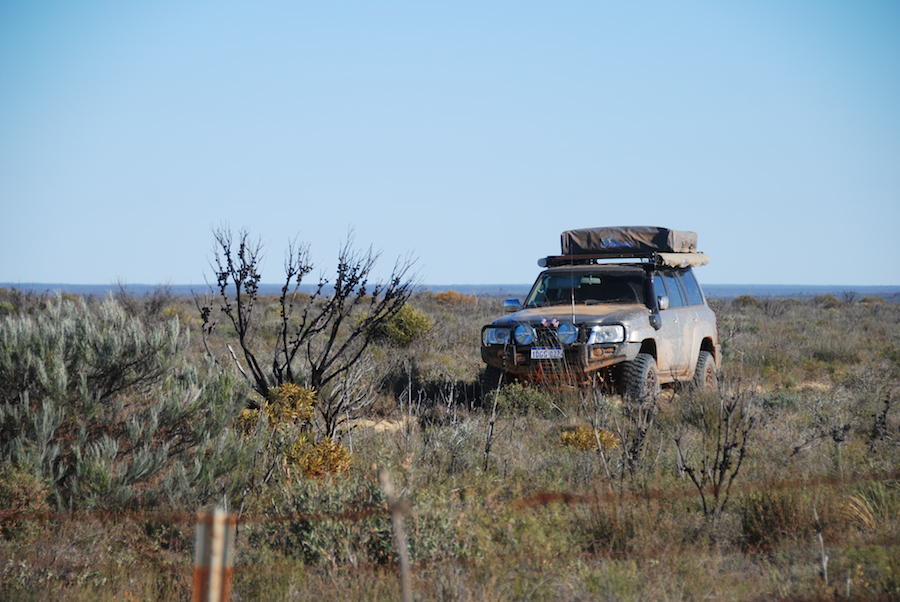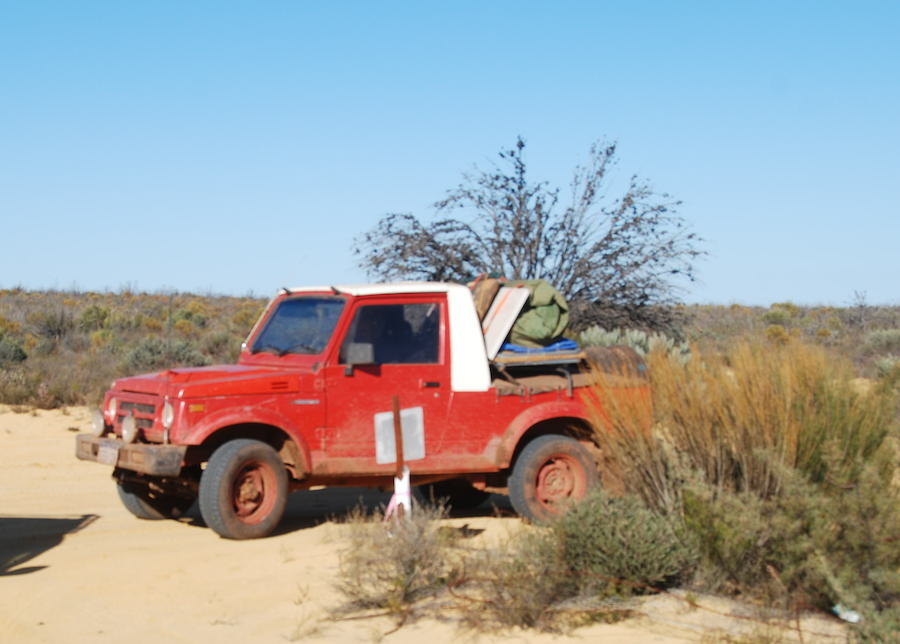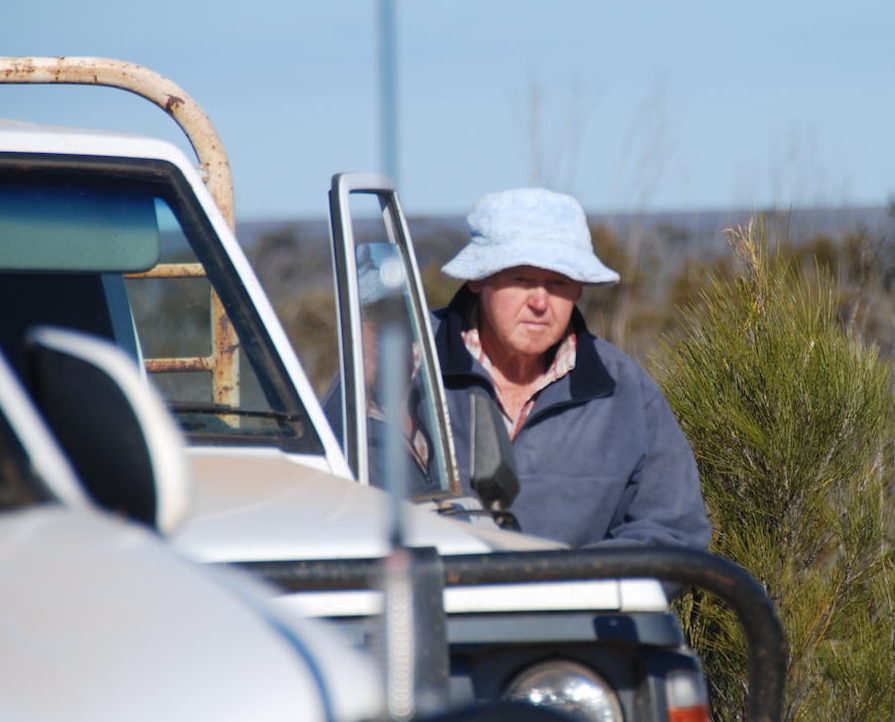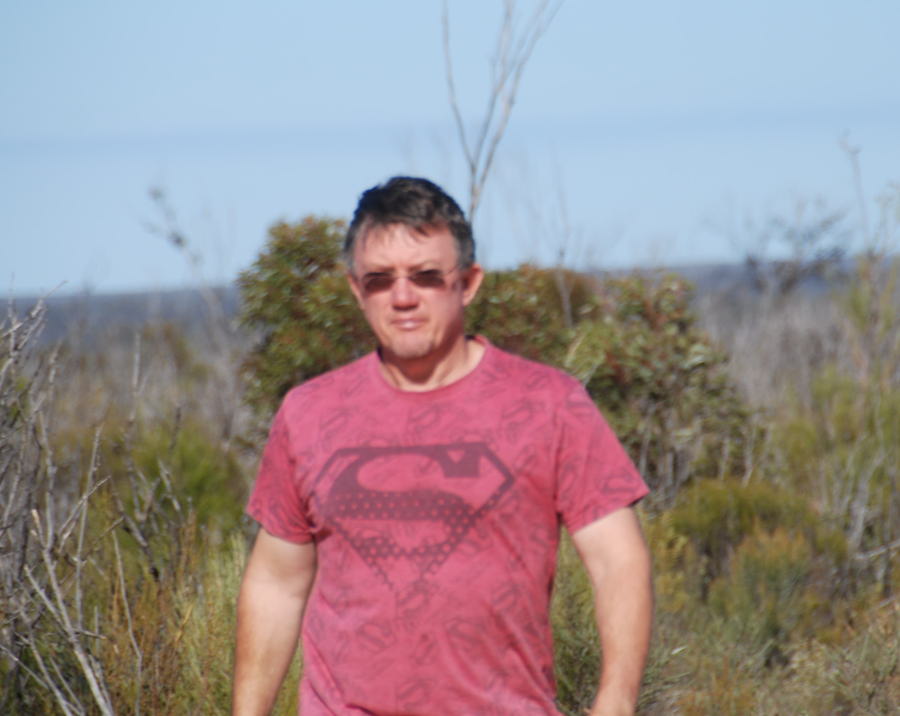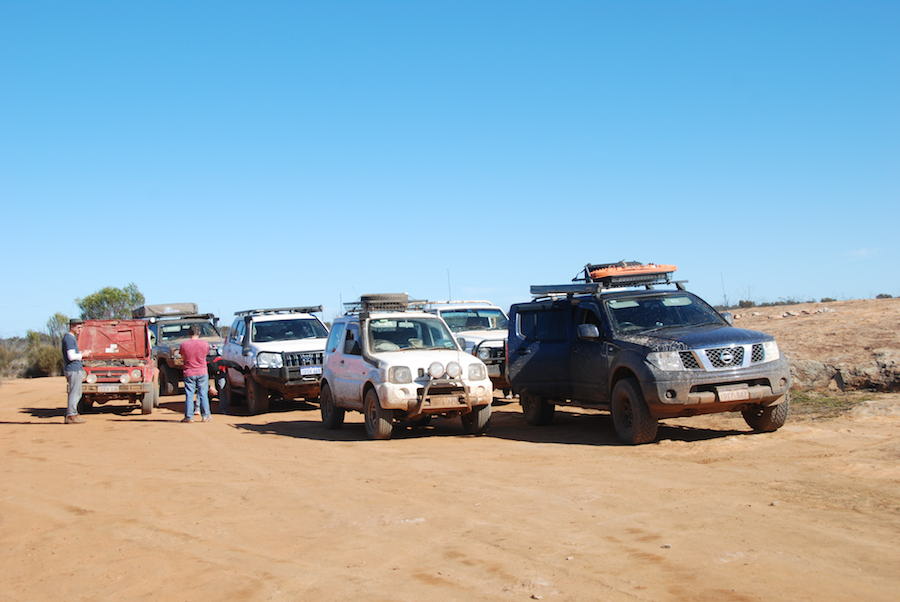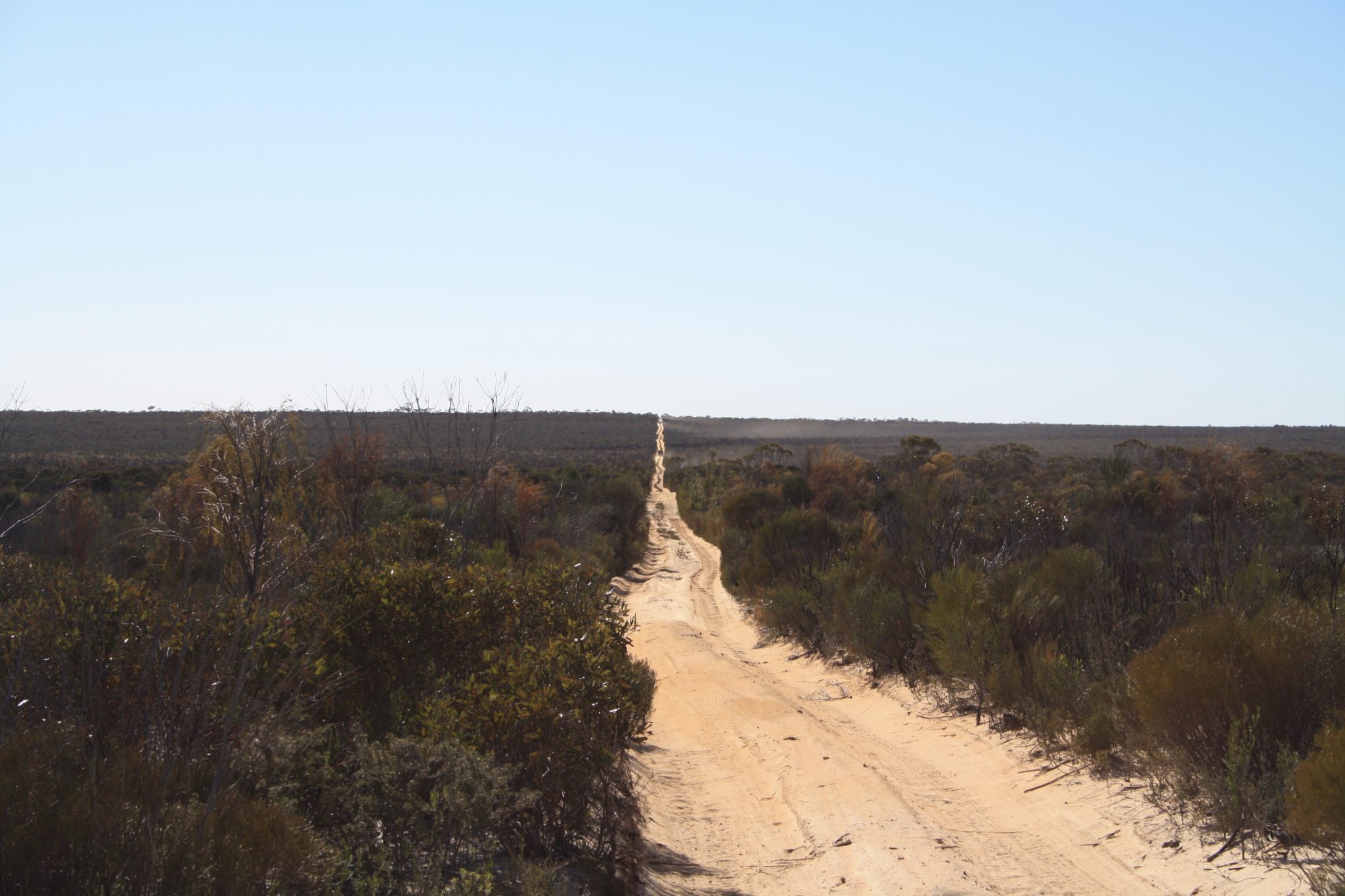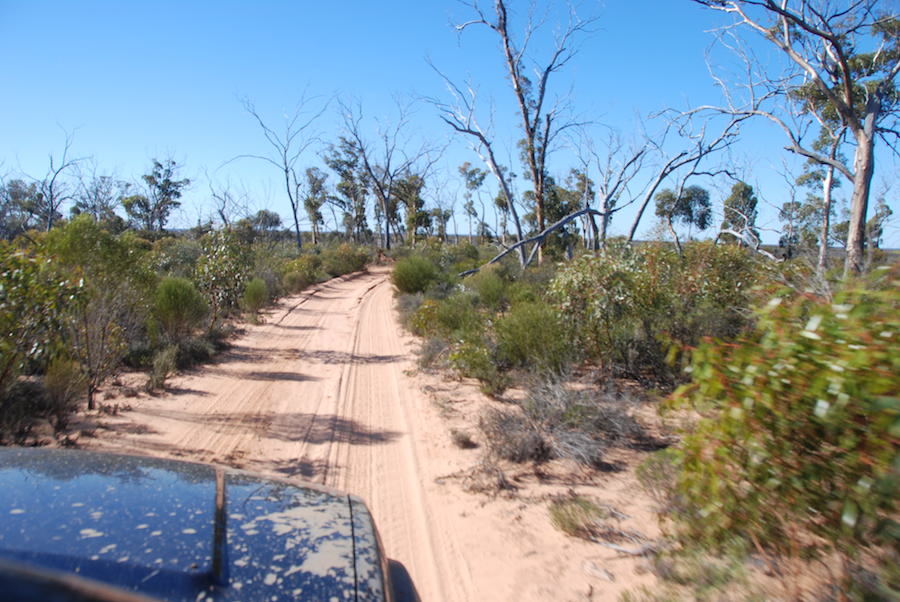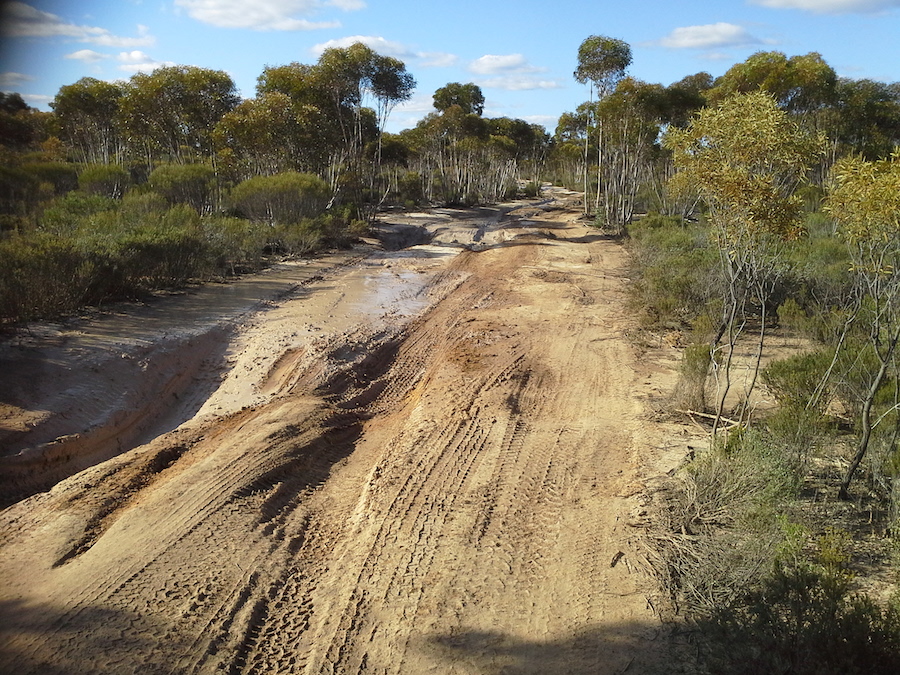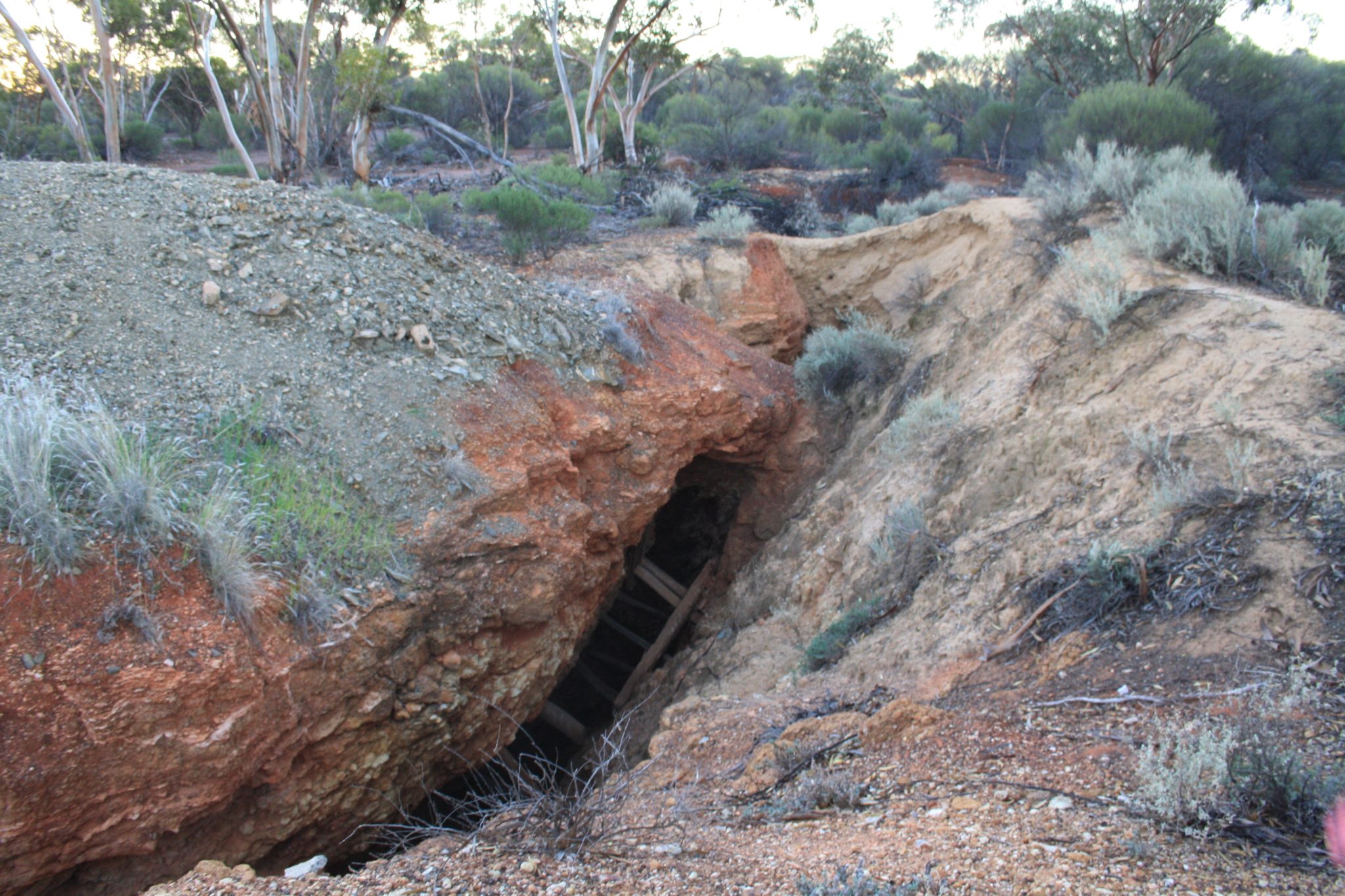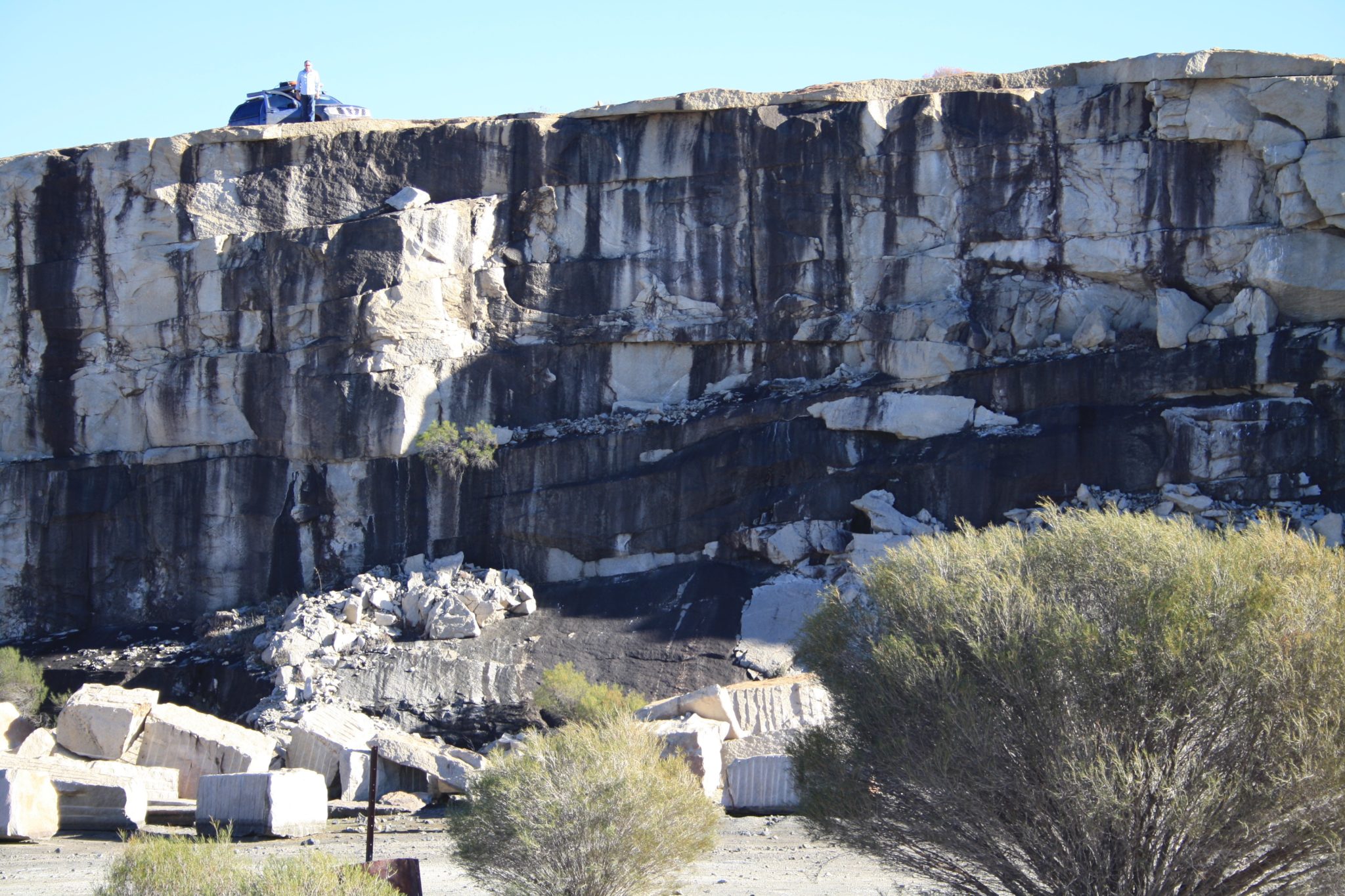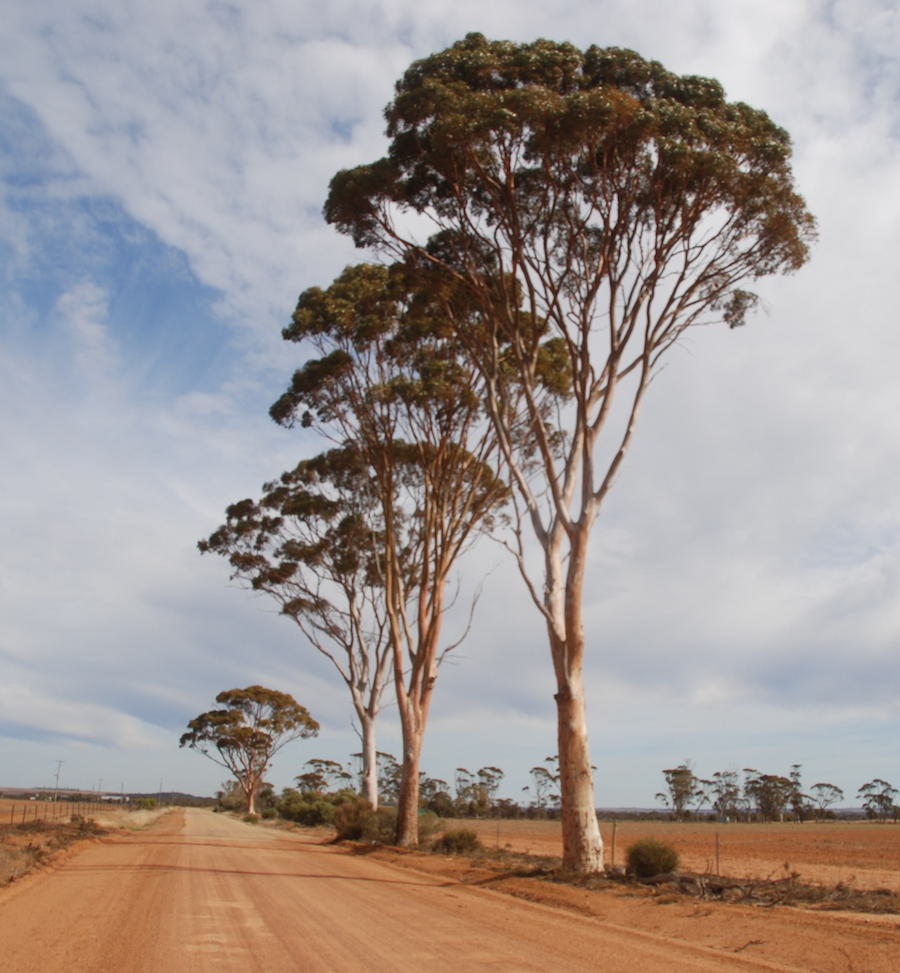The Holland Track was created as a direct result of the discovery of gold in Coolgardie. The gold brought fortune seekers to Western Australia from all around the world. Some alighted at Albany and made their way to Perth where they headed east by various forms of transport to the Goldfields. Others continued by ship to Fremantle and then headed to Southern Cross and the Coolgardie Goldfields. Whichever route they chose, it was long and tedious.
A more direct route was needed.
John Holland, an experienced bushman, mounted a carefully planned expedition to find a shorter route to the Goldfields.
In April 1893, Holland, Rudolph Krakouer, David Krakouer and John Carmody left Broomehill with five ponies, a light dray, a 100 gallon (450 litres) water tank and provisions for 5-6 months. Using a small compass they aimed for Gnarlbine Rock, the Goldfields’ main water supply. Holland would go ahead each day and scout for water and horse feed, while the others cut the track. They reached Bayleys Find at Fly Flat on 18 June, having covered nearly 540 kilometres in two months, cutting the longest cart road ever made in one stretch in Western Australia.
The track was used immediately by prospectors, fortune seekers, merchants, transport operators and anyone else needing to get to the Goldfields.
18,000 people used the shortcut over the next three years, up until the last link of the railway from Perth to Coolgardie was completed, providing a rail link to the Goldfields.
The southern half of the track was subsumed by expanding wheat growing areas during the 1920s. For almost a century the northern half (from the Hyden Norseman Road to Coolgardie) was all but abandoned and the area reverted to bushland except for some intrusions by sandalwood cutters.
Present day access is a tribute to Broomehill farmer Graeme Newbey and researcher Adrian Malloy who were determined to reopen the track. They led a group in November 1992 and with the aid of Graeme’s tractor succeeded in cutting the track from Wattle Rocks, about 22 kilometres north of the Hyden Norseman Road to Thursday Rock about 70 kilometres south of Coolgardie.
In June 1993 Graeme Newbey led an expedition along the newly opened Track to mark the centenary of Holland’s historic journey.
The Lakes to Buckleys Breakaway (32°38’54.78″S 118°44’48.98″E, 50H 663846mE 6386325mN) 297 km
We left The Lakes and drove via York, Quairading, and Corrigin to Kondinin where some of the vehicles were refuelled.
Driving 300 kilometres during the evening ‘pre trip’ means we can pack so much more into the adventure. It places the group at the ‘start’ first up in the morning rather than departing from Perth.
At Buckleys Breakaway erosion has cut through the orange laterite (gravel) and exposed the underlying white clay (kaolin) cliffs.
- Buckley Breakaway
- Early morning.
- No power in the sun.
- Very cold.
There is Box Poison in the breakaway. This flowering plant of the Gastrolobium species is deadly to stock and was a curse to early explorers and settlers who had to be vigilant in keeping their free ranging stock away from it. There are also Cypress Pine and Blue Mallet, both commonly found in laterites and breakaways.
With the temperature at zero degrees Celsius the early morning walk around the breakaway was a good opportunity to warm up.
- Early morning walk.
- Early morning at Buckley Breakaway.
- Buckley Breakaway
- Buckley Breakaway
Buckleys Breakaway to Newdegate (33° 5’36.02″S 119° 1’27.03″E, 50H 688906mE 6336543mN) 69 km.
On the way to Newdegate we passed the now abandoned settlement of Lake Biddy.
Being a public holiday weekend it was very quiet in Newdegate. The John Holland Way (a ‘tourist trail’ suitable for 2WDs) starts in Broomehill and passes by Newdegate. The town is the centre for a successful grain and sheep growing area in the Great Southern that is renown for the annual Machinery Field Days held in September since 1972.
Newdegate was declared as a town in 1925 and was named after Sir F.A. Newdigate-Newdegate, KCMG, Governor of Western Australia from 1920 to 1924.
Fuel is available at the Newdegate Roadhouse seven days a week. There is an IGA Express store in the main street.
Newdegate to Dragon Rocks (32° 48’ 48” S 119° 01’ 58” E, 50H 690309mE 6367576mN) 34 km
Heading north we called in to Sandplain Rocks. There was not much to see so we continued on to Dragon Rocks.
Dragon Rocks is a large nature reserve (322 km2) 34 kilometres north of Newdegate, surrounded by farmland. It is listed on Australia’s Register of the National Estate as an area significant for rare species of plants and animals. Holland used the name in 1893 and it is thought that is it named after the Dragon Lizard, abundant in this area. ‘Dragon’ refers to many species of lizard in the genera Amphibolurus and/or Ctenophorus.
North of the Reserve the road heads north-east and gets a name change to Holland Track.
Dragon Rocks to The Pimple (32 34 01 S 119 18 27 E, 50H 716628mE 6394371mN) 36 km
A kilometre short of Lake King Road, we located the track into a granite outcrop called The Pimple. The track was overgrown and clearly was little used. Eventually it became impassable, the thick vegetation blocked any view of the way ahead. It was only after I stood on top of the vehicle that I was able to see the rock – only 50 metres ahead.
- End of the track.
- Dan and Cliff pushing through the thickets.
- Andrew atop a hidden well at The Pimple.
- This wood lined well at The Pimple clearly hadn’t been visited for many years.
- Near the top of The Pimple.
- The Pimple
- Shallow water on The Pimple.
- Andrew and Barry return to the Holland Track.
As we were forcing our way through the thickets towards the rock Andrew noticed a large mound, clearly man-made. It was on old, wood lined well not shown on any maps.
From the summit of The Pimple we could see nearby Peter Rock. These two monadnocks are typical of many granite outcrops in this portion of WA. There is no mention of them by early explorers; the name being first used around the late 1920s, a few years after the area was settled.
The ’discovery’ of the well and the certainty that no-one had visited the rock for many years made the side trip even more worthwhile.
The Pimple to Emu Rock (32°27’24.52″S 119°25’2.95″E, 50H 727233mE 6406354mN) 19 km
The Holland Track runs along the edge of Lake Carmody.
- Track alongside Lake Carmody.
- Kim in the Navara at Lake Carmody.
The lake was named by Holland in 1893 after John Carmody, a member of his party, who turned 21 years of age the day the track makers arrived at the lake.
We pushed on to Emu Rock, one of many large granite outcrops in the Great Western Woodlands. It a huge rock surrounded by sheoaks that in days past provided a focal point for social and cultural gatherings of the Ballardong people. Today it offers excellent camping sites, overlooking a small, unnamed lake.
Emu Rock is often considered, erroneously, to be the start of the 4WD section of the Holland Track.
- Ewen in his 4.8L GU Patrol Wagon.
- Dan and Dee in their Prado.
- Andrew and Barry in his GQ Patrol tray back.
- Cliff in his Maruti Gypsy King just before Emu Rocks.
Holland named it ‘The King Rock’ in 1893. Surveyor A.W. Canning (he of Canning Stock Route fame) referred to as Emu Rock during his surveys of the Rabbit Proof Fence in 1902. To prevent confusion with King Rocks further north-west, named by Frank Hann in 1901, the name Emu Rock was adopted.
The area was used for pasturage for Rabbit Department stock during the construction and maintenance of the Rabbit Proof Fence around 1905. This fence, now known as the State Barrier Fence, is two kilometres to the north-east.
- Glimpse of the lake.
- Andrew and Barry at Emu Rocks.
- Unnamed lake to the east of the rock.
- Jimny, Maruti and Navara.
Emu Rock to the State Barrier Fence (32°26’27.06″S 119°25’59.92″E, 50H 728762mE 6408090mN) 2 km
The section of the Holland Track brought us to a gate in the State Barrier Fence. Previously known as the Rabbit Proof Fence, it was part of Western Australia’s desperate attempt to stop rabbits from invading the state. Only 30 years after rabbits were introduced for sport in Victoria in 1859, they had crossed the Nullarbor and were in plague numbers in the eastern part of Western Australia.
The government acted quickly, building what was then the longest fence in the world (3256 kilometres) in an attempt to stop the spread of the rabbit. (Fence No. 1). This attempt at what today is known as biosecurity was less than successful.
The rabbits breached the Fence before it was finished, and two more fences were ordered. These barriers kept rabbits out until the 1920s, when the line of demarcation was again breached. Eventually biological control methods (myxomatosis 1950s, calicivirus 1980s) were used to control rabbit populations. For much of its southern length, No. 1 Fence delineates the sharp boundary between the Great Western Woodlands and the Wheatbelt.
Today the fence is maintained by the State Government against the impact of wild dogs on pastoral and agricultural properties.
Read more about the Rabbit Proof Fence.
State Barrier Fence to the Hyden Norseman Road (32°24’50.83″S 119°27’32.24″E, 50H 731241mE 6410999mN) 6 km
The Hyden Norseman Road stretches 312 kilometres between Hyden and Norseman and is an excellent alternative to travelling the Great Eastern Highway to Norseman. It is mostly gravel, unfenced and is used by road trains shifting ore between mines and processing plants.
- That’s the way we are going.
- The TLCCWA look after the Holland Track.
The Holland Track is signposted and there is an information board and plaque at the point where it heads north from the Hyden-Norseman Road.
Hyden Norseman Road to Sheoak Rock (32°19’15.91″S 119°31’29.00″E, 50H 737671mE 6421172mN) 12 km
- Typical of the Holland Track.
We stopped for lunch at Sheoak Rock, 400 metres north-west from the Track.
Sheoak Rock is a low granite outcrop that has been shown on maps since 1906. It has a Trig Station (HYD-33) on its summit. The name of the rock is derived from the swamp sheoak (Casuarina obesa), which is prevalent around the outcrop. One of the aboriginal names for sheoaks is Kwowl, a word that is said to mimic the sound of the wind as it blows through the tree’s needle like branches. Sheoaks are known as ‘dioecious’ – that is, they have separate male and female plants that are pollinated by the wind. In the settled areas these sheoaks were used for fence posts, fuel wood, and to reclaim salt affected areas.
- Lunch at Sheoak Rock below the survey marker.
So far the Track was fairly innocuous. Cloudless skies and a warming day made for a pleasant drive. Just over two kilometres after the lunch break we passed a telecommunications tower, a structure that would not elicit comment if in a less remote location. 800 metres past the tower is Native Rocks (32°17’59.47″S 119°33’8.61″E,50H 740333mE 6423465mN), named by Surveyor H.A. Smith during a traverse in 1927. Six kilometres further on is Wattle Rocks (32°15’48.93″S 119°34’58.06″E, 50H 731241mE 6410999mN), another feature named by Smith.
The Track was pretty cut up around Wattle Rocks.
- Ewen enters boghole near Wattle Rock.
- Ewen tackled this bog hole in 2WD.
- Boghole near Wattle Rock.
- Out of the hole.
- Ground clearance is all important.
- Exit the boghole.
Ruts, bog holes and diversions were constant for many kilometres. We averaged 20-25 kph.
- Greg’s 1600cc Suzuki Jimny.
- Cliff’s Maruti has a high performance 1300cc twin cam engine.
- A workhorse GQ.
Another six kilometres north-east and the track passes by a large malleefowl nesting mound. It’s difficult to determine whether this is still in use although there is much advice to not disturb it. One would expect that all the passing tourists would drive away any member of Leipoa ocellata. Malleefowl are large, ground dwelling birds that are listed as vulnerable, mainly due to clearing of habitat, and predation. The male mallee fowl tends to the nest, which is constructed of surrounding leaf litter, sandy soil and other material. He also regulates the temperature of the composting nest by adding or subtracting litter and soil, as environmental heat generated by the nest’s decomposing organic matter is used to incubate the eggs. The female lays up to 20 eggs in the nest over several weeks.
We took some photos and moved on.
- Dee
- Gnow’s nest
Sheoak Rock to Mt Holland (32°10′ 11.09″ S 119°43′ 56.64″E, 50H 757655mE 6437476mN) 27 km
The Holland Track intersects the Marvel Loch-Forrestania Road at an active mining area. We crossed the road and turned into the camp/picnic area at the base of Mount Holland. This an area of several acres with plenty of trees offering good shade. A rough track leads to the summit of Mount Holland and panoramic views over the Great Western Woodlands. More than six vehicles in the clearing on the top of the hill would be a tight fit.
R.J. Holland named Mt Holland on 18 May 1893.
- Survey marker at the top of Mount Holland.
Mt Holland to Overnight Camp (32°8′ 25.56″ S 119°47′ 51.77″E, 50H 763901mE 6440568mN) 12 km
Where previously the Holland Track weaved around waste dumps, haulage roads and rehabilitated mining areas, today it skirts the mining area along a power line due east before turning due north towards a tailings dam.
- Hard to understand why drivers need to erode the track so extensively.
- The depth of the wheeltrack causes issues for the smaller vehicles.
The north-heading section of the Holland Track between the power line and the tailings dam was deeply rutted and had numerous bogholes.
- Maruti Gypsy King.
- Looks like a Suzuki Sierra.
- Long Wheel Base.
- Very similar.
- Another mudhole near where we camped.
- Ewen powers out of mudhole.
- 4.8L Patrol.
- Nicely set up.
- Barry and Andrew just before camp on Saturday.
- Barry powered out of the boghole just before camp on Saturday.
The dappled light from the setting sun filtering through the trees was making driving difficult and so, even though a long way short of our planned stop, I decided to camp early. An open area with plenty of wood on the section of road to the east of the mining area presented itself as our temporary winter residence.
- Campsite seven kilometres east of Mount Holland.
- Cliff loads up the fire.
Overnight Camp to Sandalwood Rocks (32° 1’44.06″S119°57’18.19″E, 50H 779087mE 6452541mN) 22 km
As we left the overnight stop the change in the vegetation is immediately obvious. From the Hyden Norseman Road the Holland Track runs through sand plain country. Towards Centenary Rock and beyond the vegetation changes from low scrub heath to woodlands. Particularly noticeable is the presence of eucalypts on the top of rises where gravelly soils are present.
- Kim in Navara.
- Navara
- Prado
- Dan and Dee in the Prado.
- Andrew and Barry before Sandalwood Rocks.
- Sandalwood Rocks
Sandalwood Rocks to Krakouer Rocks (31°42’36.5235″S 120°24’42.9689″E, 51J 254740mE 6488779mN) 67 km
- Southern end of fence.
- State Barrier Fence
- Holland Track alongside the State Barrier Fence.
- Ewen approaching the State Barrier Fence.
- Cliff at the State Barrier Fence.
After Sandalwood Rocks the Track detours south-east to get around the bottom of the State Barrier Fence. After heading four kilometres along the eastern side of the Fence the Track again heads north-east towards the Mt Day Road.
- Barry at Mt Day intersection.
- Ewen same location.
- Andrew at Mt Day Road.
- At Mt Day Road cross roads.
Krakouer Rocks were named after David and Rudolph Krakouer, members of Holland’s 1893 expedition. One of the names put forward for this feature was Newbey Rock after the 1993 Holland Track Centenary Expedition Leader, Mr Graeme Newbey, a retired farmer from Broomehill. However, the Geographic Names Committee decided that the name Krakouer Rock would be more suitable as it is linked directly to Holland and his expedition.
- At Krakouer Rocks.
Krakouer Rocks to Victoria Rock Road (31°32’47.27″S 120°46’21.44″E, 51J 288558mE 6507682mN) 48 km
We stopped for lunch at the Agnes Gnamma. This rock hole was named by the Holland Track Centenary Expedition after Agnes Holland, wife of R.J. Holland and the first woman to travel the Holland Track. She accompanied her husband on his second trip along the track in December 1893. She died of typhoid only six months later, the first white woman to die in Coolgardie, and was buried in the Pioneer Cemetery at Coolgardie. Gnammas were vital to early explorers, prospectors and of course aboriginal people.
- Along the Track.
- Mt Day Road
The northern portion of the Track has many twists and turns, requiring constant attention.
- After Diamond Rock.
- Typical of the Holland Track.
- Many, many of these.
- Typical of the Holland Track.
- Tracks like these caused difficulties for the smaller vehicles.
Victoria Rock Road signifies the end of the vehicle part of the Holland Track. Barry and Andrew left the group here to head home. After discussion among the rest of the group it was decided to delete the planned visit to Cave Hill and Burra Rock (these excellent features will be included in a future trip) and, after refuelling in Coolgardie, proceed direct to the planned overnight camp at Yerdanie Rock.
Heading south from Coolgardie we turned west onto a little used track a few hundred metres short of Gnarlbine Rock. The intention was to find the track through to Yerdanie Rock that was shown on maps. The Manager at the Department of Parks and Wildlife Kalgoorlie had told me earlier that the track didn’t exist. It does but is too overgrown to be viable. We didn’t have the time, tools or machinery to open out the track to Yerdanie and retreated to the abandoned Prince of Wales Mine where we found a very nice camp site.
- The abandoned Prince of Wales mine.
It was another cold night/morning. According to our thermometers the temperature dropped to minus two degrees Celsius. Washed cups stuck to the table, butane stoves were ineffective, water froze, the upper tailgate on the Navara wouldn’t stay up, towels were stiff – it was bloody cold!
Interestingly, Cliff’s LPG stove worked perfectly adequately while my butane stove didn’t. Here’s why.
- Quarry at Boorabbin Rock.
- Kim atop the blasting face.
We headed out to Great Eastern Highway, visited Boorabbin Quarry and then turned off at Carrabin to follow the Goldfields Road to York – a much more interesting drive home.
- Eucalypts on Goldfields Rd near Hines Hill.
© Kim Epton 2016-2024
3065 words, 85 photographs.
Photographs
Kim Epton
Cliff Hills
Andrew Brooks
Feel free to use any part of this document but please do the right thing and give attribution to adventures.net.au. It will enhance the SEO of your website/blog and Adventures.
See Terms of Use.





